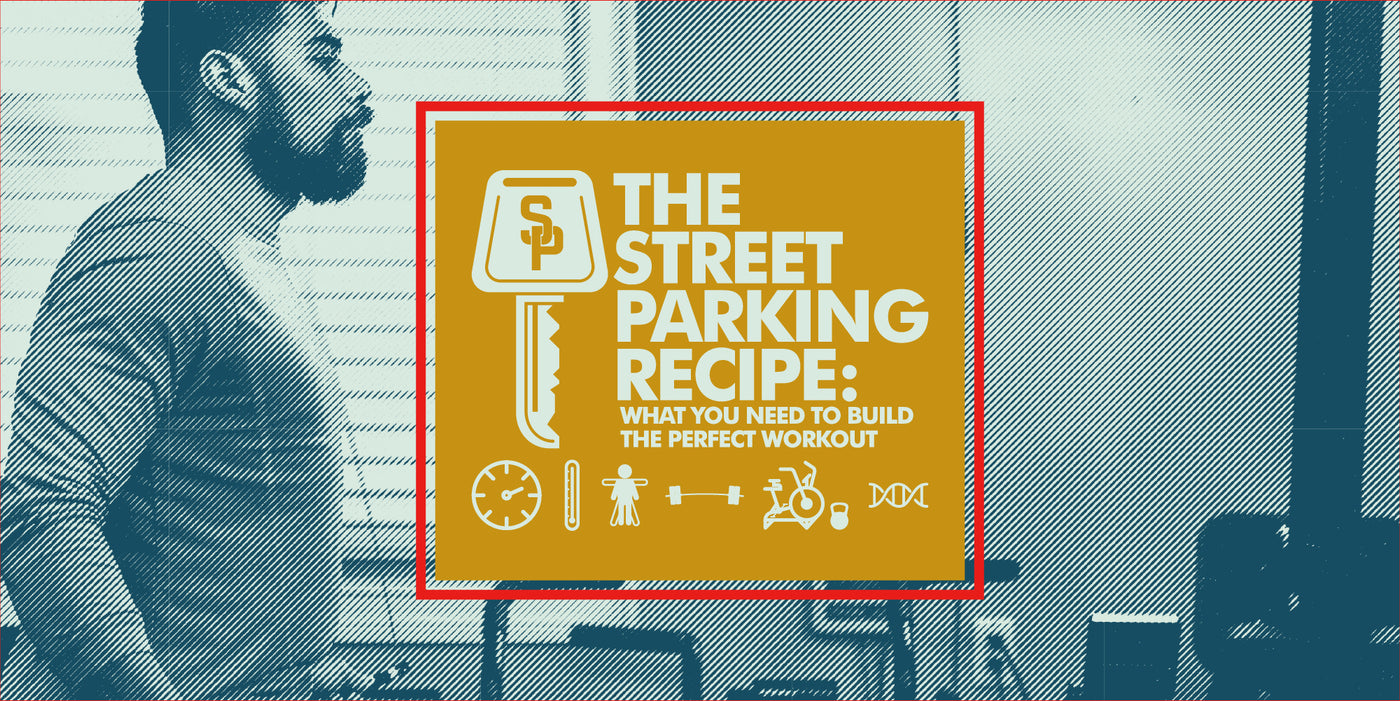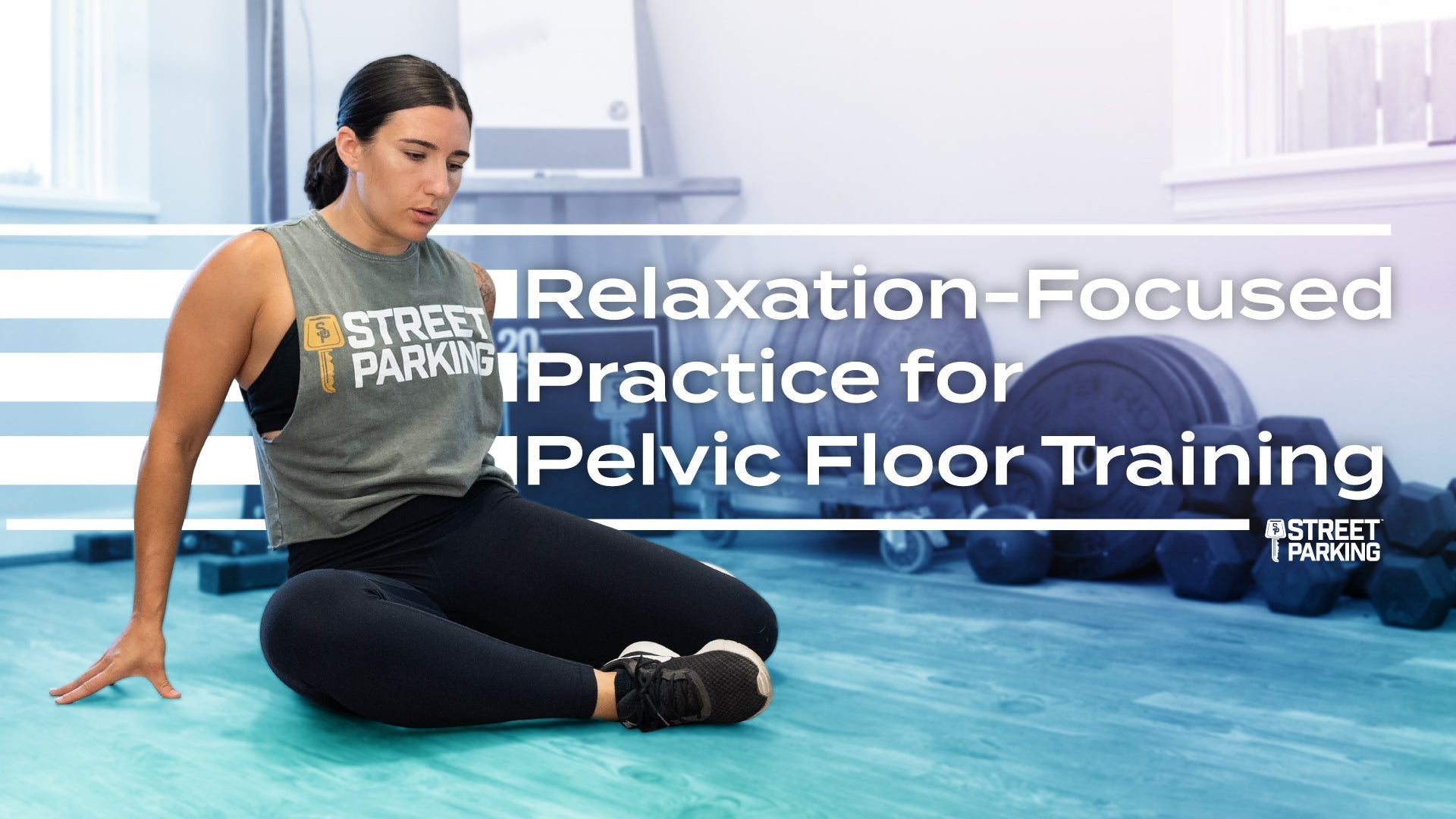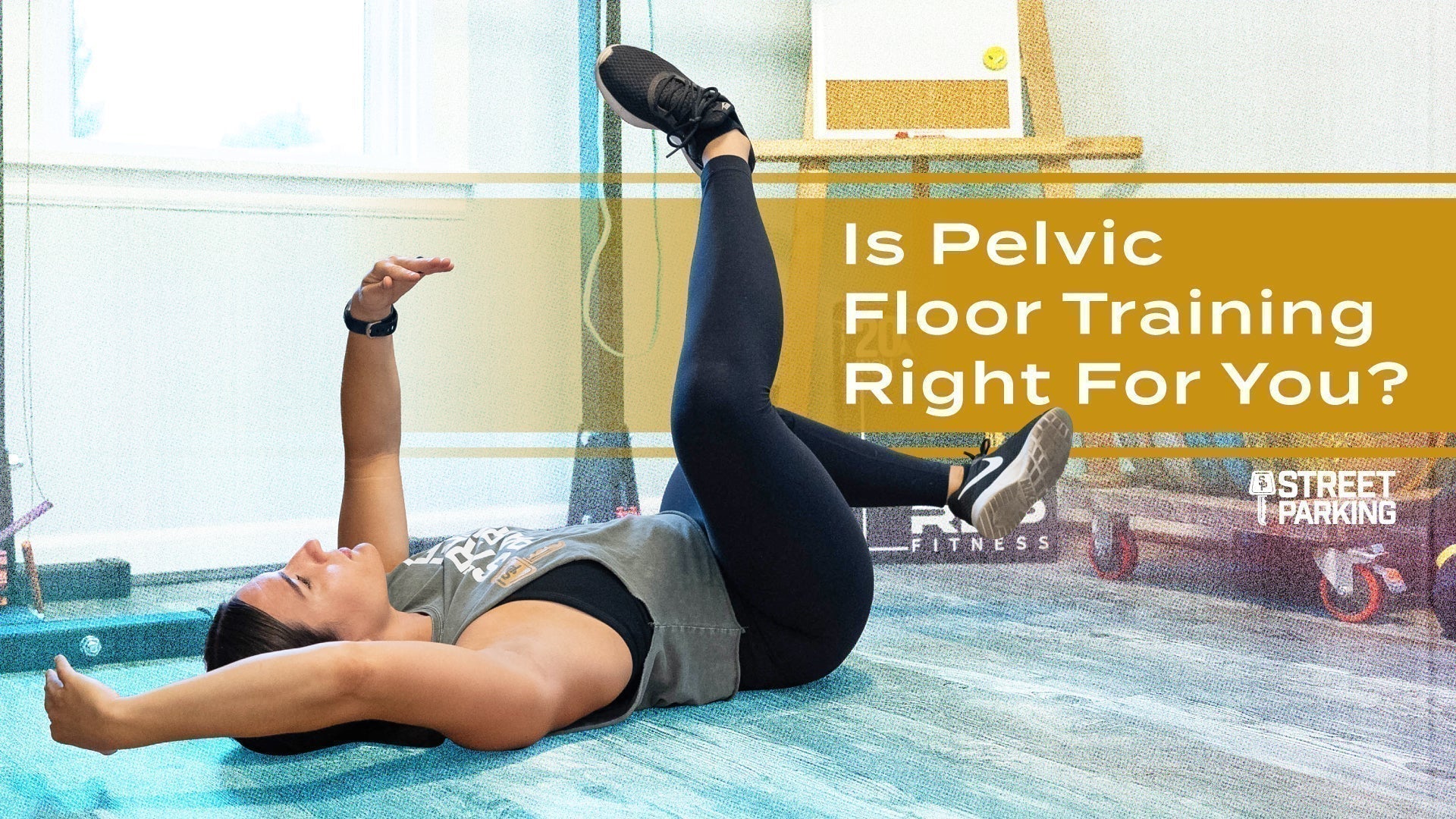The Street Parking Recipe: Building the Perfect Flavor For Each and Every Workout.

Effective programming can be thought of almost like a recipe: there are a number of key ingredients that each play an important role in the overall outcome of the final product. Different combinations and amounts of each ingredient can produce very different results.
Every Street Parking workout - whether it’s one of the daily ABC/SHIFT programs or an Extra Program - has key ingredients, and each has a desired stimulus and intent. We want you to learn how to recognize the goal behind the workout - as well as the loading suggestions and goal times/score so that you can effectively choose proper weights, customizations, substitutions, and get the most out of each one.
EACH of the following areas must have a desired stimulus (or GOAL):
- Total Time-How long the ENTIRE workout will/should take (or how much work should be accomplished if the time is set).
- Total WORK Time -Will the goal be short intervals with breaks? Steady movement throughout? One short blaster?
- Level of OVERALL Intensity -You can't have a goal of a 20 minute workout that allows the person to move the whole time AND a goal of training high levels of overall intensity. This is where we consider which energy pathway we are aiming to train.(More on energy pathways below.)
- Movement Functions and Range of Motion we Need to Train -Squatting, Deadlifting, Running, Jumping - all lower body - all different movement functions. All things we need to build in.
- Loading -Is our goal heavy, light, medium? Training more strength, stamina, or a little strength endurance with moderate loading?
- Total Reps -Usually with a heavier workout you will do fewer total reps than a workout with lighter weight.
- Movement Combinations -How will the movements we have chosen affect each other as we move through the workout
- Psychological Factors -Where will we break down in this workout MENTALLY? What will we learn, and how should we prepare for it?
Some workouts are programmed as “x rounds for time”. Others are programmed as an AMRAP (As Many Rounds and Reps as Possible in x minutes), and then there are others as intervals, such as short three-minute AMRAPS with a minute or two of rest in between, or any workout with 2-5 min of work with built in rest.
Every one of these types of options has a specific intent. Often they will coincide specifically with the energy pathways themselves. When multiple three-minute AMRAPS are programmed (for example) usually the goal is for you to push really hard to hit or come close to that 70% effort window using the glycolytic pathway rather than pacing at the lower intensity 40% aerobic pathway because it’s a short amount of time and you know rest is coming. Usually when you see something like an 18-minute AMRAP - before you even start the workout you’ll probably start planning your pacing to allow you to keep moving the entire time - which is usually the goal for a workout like that.
- With shorter work times and intervals with built in rest the intensity will be much higher.
- With longer work times you’re likely to pace yourself at a lower intensity level and move at a rate that you can sustain for longer periods of time.
YOUR GOAL: look at the provided goal times/scores for each workout to get an idea of the level of intensity we are after for each one!

We use full body movements in the way your body is designed to move. If you come from a background of muscle isolation, it may feel like you’re using your whole body all of the time with the movements we program.
Our bodies are designed to work as one whole unit. When we train this way, the outcome is both aesthetically pleasing AND creates balance across all of the joints for longevity and coordination.
We like to think of movements in terms of function, not necessarily a targeted body part. For example, with upper body movements you can have a pull or a push function. Both a pull up and push up are upper body movements but they have completely different functions. An example of this with the lower body is a squat versus a deadlift. One is a squat function, the other is a pull from the ground.
We also want to train different planes of movement. For example, in an upper body push some different planes of movement would be a push press where you are pushing up over your head versus a push up which is pushing your body up horizontally. We make sure we balance your joints and muscles to work all of the planes and functions.

Being able to do one heavy deadlift well is a completely different beast than being able to do 100 deadlifts of a light or moderate weight in a row. Even though it's technically working the same muscle group, the demand on the muscle groups moves from power and strength to stamina. The energy pathway - and the demand on your body - is different.
We’ve seen many times a powerlifter who has a heavy one rep max but not much stamina to do more than 10-15 reps at a time. We want to train in both. Not only for the general needs of LIFE but because we want to be efficient in many movements across the energy pathways*.
There are many benefits to being strong, but it's also important to have stamina to go longer or do more reps. Rep ranges will be different depending on the goal of each workout. We consider how many reps you are able to do in a row with a certain weight.
- If the workout is MEANT to be heavy - the reps will be lower for that movement per round.
- If the workout is MEANT to be light and train stamina - the weight will be lighter and overall reps and reps in a row will probably be higher as well.
YOUR GOAL: check the Coaches Notes and watch the demo videos for tips on how many reps you should be able to do unbroken, or how long each round should take, so that you choose the right weight for the intended stimulus!

Sometimes we want to do a wall walk and a push press together because we’re trying to blast your shoulders on purpose. Sometimes we want a wall walk and a deadlift together so your shoulders get a break before you head back to the wall walk. With the deadlift wall walk combo - you won’t need to take as many breaks and it’s not so much of a shoulder blaster but more of a full body effort.
We always think about how different movements affect each other and the combinations are always made on purpose. We must pay attention to this when programming workouts so that we’ll know how long it’s going to take you and how much rest you’ll need between them. This is the only way to truly know we are hitting the desired stimulus.
We never program anything just because it’s “hard”!
But…workouts absolutely can also bepsychological. Six reps of a movement is different mentally than five. Five is that number we are comfortable with but six might mess with our mind. It is important we never let ourselves get TOO comfortable in our minds if we want to keep improving our overall fitness.
People who have been doing these types of workouts long enough know that the more simple a workout looks on paper - the more uncomfortable it will probably be. There IS a psychological component there and they know they are going to need to really dig deep and push through.
A big mistake many programmers make with the psychological component is constantly programming "hero" type workouts - or super long workouts with a bunch of reps of a bunch of movements in a row just to make the workout long and arduous. Too often, this is being done just because they think that LONGER means harder and so MUST be more effective.
And while long, strenuous grind workouts ARE mentally tough and have their place, for general fitness they are not as effective as some of the more simple workouts you can find on the more simple, shorter, daily workouts. A workout with a goal range of 12-18 minutes pushed at full intensity, done with the right weight and customizations for your current fitness level, will deliver such a potent stimulus if you push the pace to get it done as quickly as possible.
Another example workout to consider is something like 10 rounds, each round in a 2 minute window, of 200 meter run, 6 deadlifts, 15 air squats. You get rest but it’s all based on how hard you push each round (and yes this INCLUDES pushing the run). If you come out too hot in the beginning you’ll learn a lot about your pacing.
You really learn to push and how to pace in workouts like these so it’s hitting that psychological factor as WELL as pushing the intensity we need to hit that 70% effort window we want to spend most of our time in.
YOUR GOAL (or OUR goal for YOU): develop mental strength just as much as physical strength from pushing through the workouts to develop that attitude of, “If I can do this, I can do anything!”
CHOOSING THE PROPER VERSION AND CUSTOMIZATIONS TO REACH DESIRED STIMULUS IS KEY TO YOUR RESULTS!
How do you know if you are getting the proper stimulus? How do you know if you are doing the workout "right" and using the right ingredients for YOU?!
- Watch the demo video that comes with EVERY workout.
- Read the Coaches Notes.
- Check the GOAL TIME or GOAL ROUNDS and assess your ability to meet those goals.
- Choose the appropriate version (A, B, C or SHIFT) based on equipment you have.
- Customize the movements and/or the weight used if you need to in order to meet the goals written for how many you should be able to do in a row or how long one round should take.
- Do a practice round if needed and be willing to make adjustments MID-workout if you are not meeting the goal!
- If you are injured or rehabbing from an injury, are pregnant/postpartum, check through ALL of the options for customizations, including the Mama Modifications (since they are not just for mamas). Pick what allows YOU to hit the goal times/rounds but will keep you moving safely.
Doing the workout without customizing and having it take you WAY longer than the goal time is NOT a better workout.
All that means is that you had to rest A LOT. Rest = lower intensity. Lower intensity (unless that was the goal of the workout in the first place) = fewer results.
Final thoughts: As you can see, there is much more than meets the eye to thoughtful, effective programming. We know that every member is unique. Everyone is on different schedules with access to different equipment, working at different ability levels, and resting on different days.
We are intentional and even get more creative with our programming to take all of that into consideration. In the end our goal is for everyone to get the most out of each workout as possible, to be able to jump in ANY day of the week, to keep things exciting, and keep you all motivated to build consistency and be the best that you can be.
ENERGY PATHWAYS - breaking down some science talk!
Our goal is to help you develop ALL 3 of the following energy pathways because there is benefit and fitness to be gained from all 3! Each workout will be designed with one in particular in mind.
Everything we do, not just fitness related, but also our daily life and even bodily functions require energy. We source the energy for ALL of it through one of three energy pathways:the phosphocreatine pathway, the glycolytic pathway, or the aerobic pathway. All 3 pathways play important roles for different types of efforts and each can be improved through training.
The phosphocreatine pathway is where energy is sourced for anything that is a 100% all out max effort. This would be anything that if you tried to sustain that level of effort outside of (roughly) ten seconds or one rep, you wouldn’t be able to. For example: if you ran an all out 100 meter sprint - you could not keep that pace for 200 meters or more. You cannot deadlift your 1 rep max for 2 reps.
This pathway uses creatine phosphate as fuel. A lot of you are probably familiar with or have heard of athletes taking creatine and that’s to help with this type of energy output because your body can only produce and store so much of it.
There are hormonal benefits of training this way such as increased testosterone, which builds muscle, and the nervous system benefit of your body learning to recruit all of your muscle fibers at once.
The nervous systems of most untrained people are not able to function this way. It takes PRACTICE for your body to recruit all of your muscle for ONE big effort - so often a new person who begins training here may notice themselves getting much faster or much stronger quickly - without gaining a lot of new muscle mass. The body is simply just learning to function more effectively.
- To picture the athlete who dominates this pathway think of a powerlifter, an olympic lifter, or an olympic 100 meter sprinter.
Theglycolytic pathway, which uses glucose as its primary fuel, is where you are training at roughly 70% of what you’re capable of.This would be something like a running pace you could keep for up to two or three minutes, but not any longer. This is more like an all out 400 meter run, or a workout with repeated 2-3 minute AMRAPs where you push the pace the entire work interval. Anything that requires large bursts of energy over a longer (but still unsustainable outside of 2-3 min) period of time uses energy from this pathway.
Of all 3 this pathway is the MOST bang for your buck.This is because there will be some carryover to the phosphocreatine pathway with muscle and strength gain, but there will also be some carry over into the third energy pathway which is the aerobic pathway where there are huge benefits for body fat loss, and heart and lung function. If you could choose one of the 3 to spend most of your time, this is it.
- To picture the athlete that dominates this pathway think of an elite level 400 or 800 meter runner or high level CrossFit athletes.
Theaerobic pathway is what you may have heard being called the “fat burning zone.” This is where you are functioning at 40% of your capability.Activity here can be sustained for as long as you have fuel and water to keep you moving. We live our daily lives in this pathway. Brain function, heart function, even just sitting and reading this is “aerobic”.
The benefits of training here is that fat is burned for fuel, and it’s great for heart and lung function.
We do need to remember though that DURING the actual workout is when the fat is burned when training here, unlike training in the glycolytic pathway which uses glucose as its primary fuel during the workout but can continue to burn fat for up to 24 hours AFTER the workout is over.
- To picture the athlete that dominates this pathway think of an elite marathon runner or triathlete.




